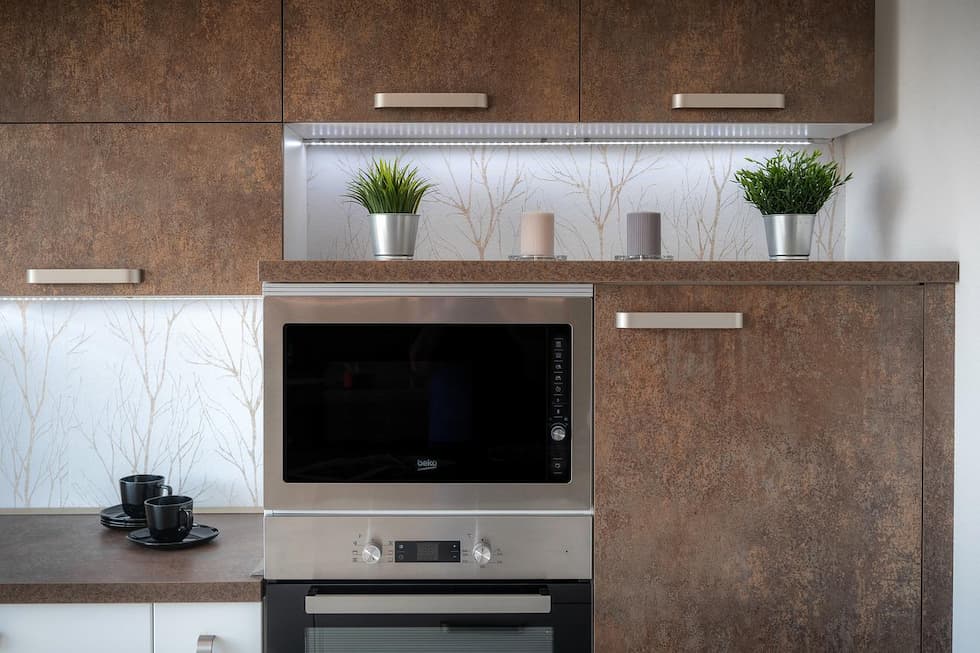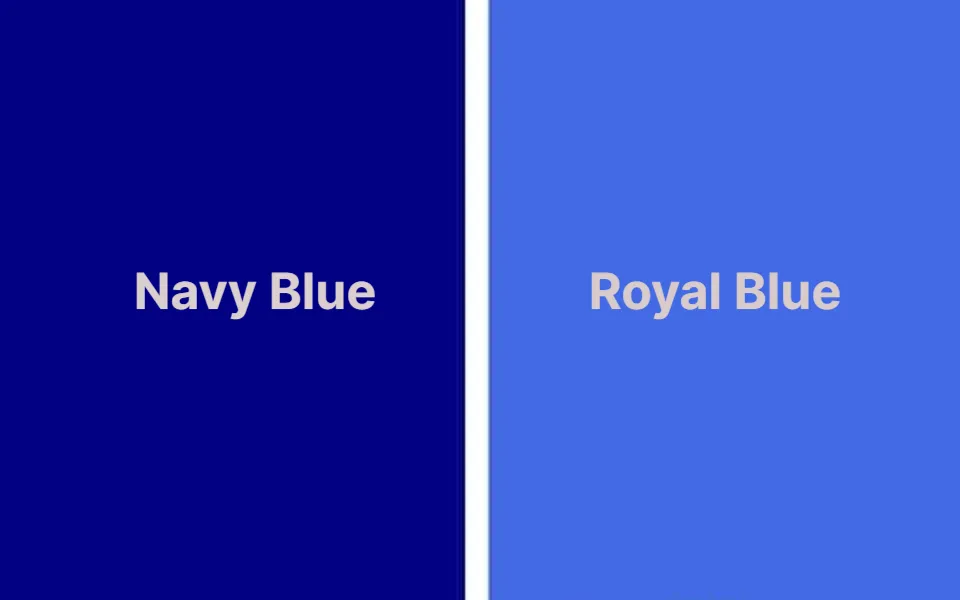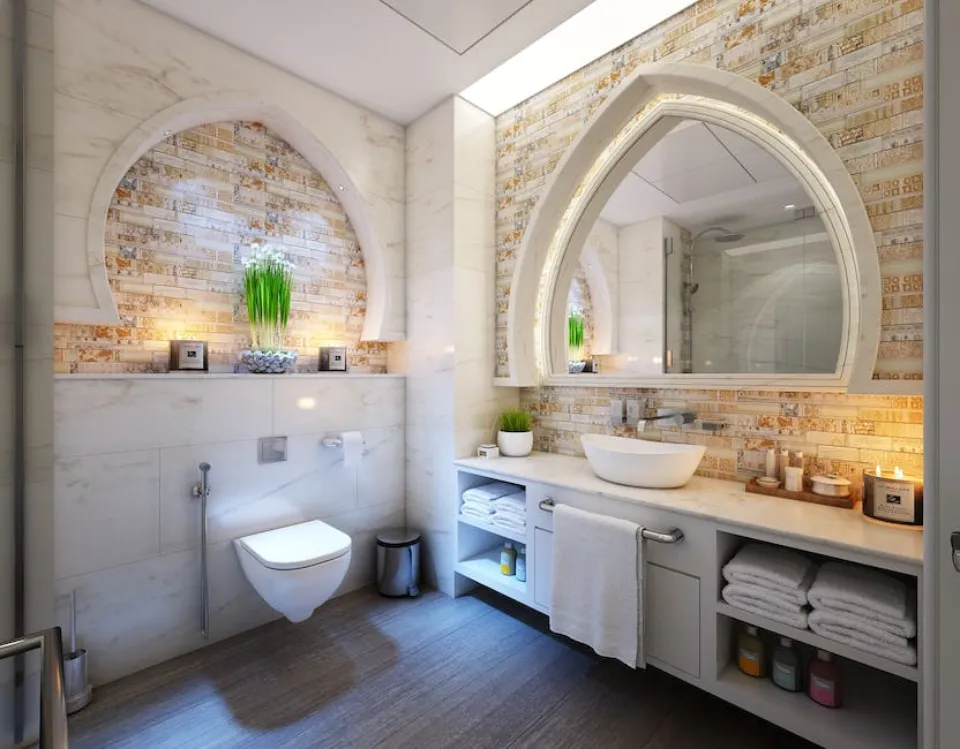The vast majority of high-quality paint finishes begin with a good all-purpose primer because it aids in paint adhesion to the surface. However, selecting a primer for painting kitchen cabinets poses a number of unique difficulties. Popular laminate cabinets can be challenging because of adhesion issues, especially those with the formica surface, which is easy to clean. Although a primer is not always necessary for the trendy effect of glazing kitchen cabinets, it is still a worthwhile step if the underlying color is being changed.
The variety of primers that are available is a blessing. Regardless of the material or the state of the cabinets, use this guide to discover which products are best for various surfaces and to look at a variety of choices regarded as the best primers for kitchen cabinets.
The best primer for kitchen cabinets includes: Zinsser B-I-N Shellac-Base Kitchen Cabinet Primer, KILZ Adhesion High-Bonding Latex Primer/Sealer, KILZ TRIBUTE Interior Satin Paint and Primer…
For more information, continue reading.
Best Primer For Kitchen Cabinets
Zinsser B-I-N Shellac-Base Kitchen Cabinet Primer
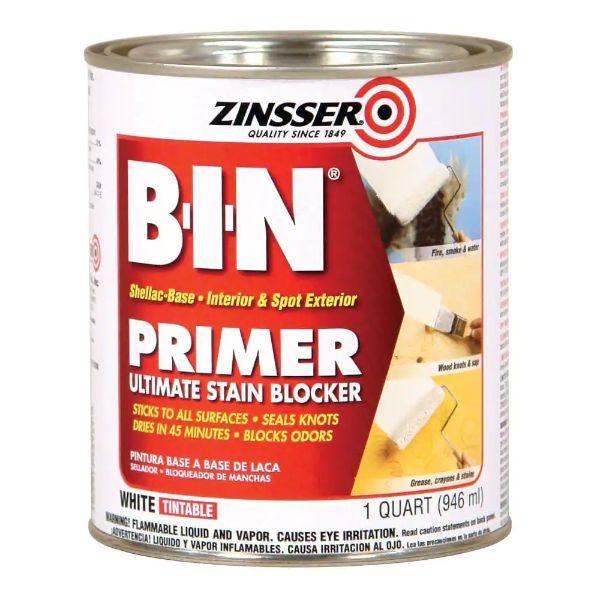
The best stain-blocker available right now is Zinsser B-I-N, a primer with a shellac base.
Your shortcut to a quick and protective fin is B-I-N. They are extremely adhesive and quick to dry.
One of the exceptional characteristics of B-I-N is the versatility it offers. All surfaces may be primed without being sanded. They function well on a variety of kitchen cabinet materials, including wood, metal, plaster, and even plastic.
The product also works with both latex- and oil-based paints.
The bottom line: Zinsser B-I-N is the weapon that covers everything unwelcome because it is more effective at completely obstructing wood knots, stains, and odors.
- They are fantastic for both indoor and outdoor use. You can fix the problem with musty odor, severe rust, and water damage on your property. You can also get rid of the smell of smoke.
- Faster-drying time.
- Works wonders on stale, moldy, and broken cabinets.
- sticks firmly without sanding.
- more effectively covers stains than other primers.
- More vapors are released by it.
KILZ Adhesion High-Bonding Latex Primer/Sealer
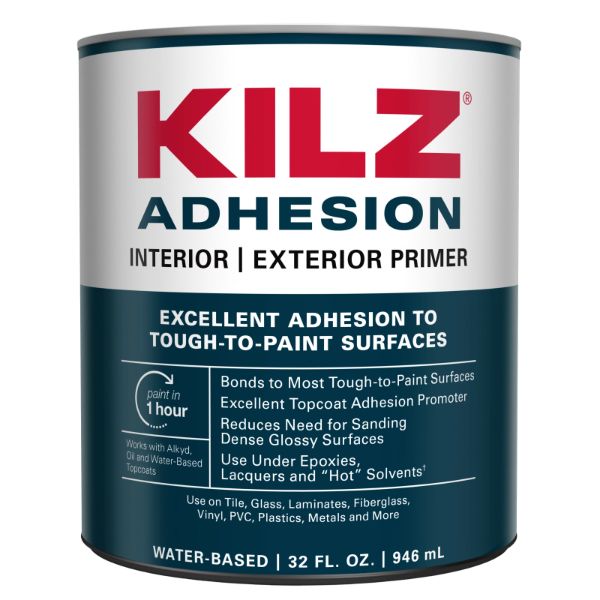
Correct bonding is simpler than you might imagine when using KILZ Adhesion. Where other conventional water- and oil-based primers fail to adhere, KILZ Adhesion can bond superbly.
This primer ensures that the topcoat adheres to all sound and safe surfaces where a strong bond is essential.
KILZ is a reliable choice because they can be used under epoxies, lacquers, and other products that contain Xylene and other chemicals.
Glass, Vinyl, Kynar, Formica, PVC, tile, glazed brick, fiberglass, metal, glossy finishes, and chalky surfaces, for instance, can all adhere to your topcoat, whether it is latex or oil-based paint.
Additionally, KILZ Adhesion dries quickly. It takes 30 minutes to dry to the touch and an hour to be ready for a second coat. But it’s less prone to peeling or cracking.
For medium- and heavy-duty bonding projects, a gallon is the best option because it can cover up to 300 square feet.
DIYers and remodeling professionals can use a brush, roller, or paint sprayer to enjoy virtually endless painting possibilities.
Vast coverage
- Porous surfaces are sealed.
- adheres to tough surfaces (textured cabinets).
- Blocks stains.
- keeping the topcoat’s mildew from growing.
- A small amount of dust or stain can destroy the bond.
- Not suitable for spray painting.
KILZ TRIBUTE Interior Satin Paint and Primer
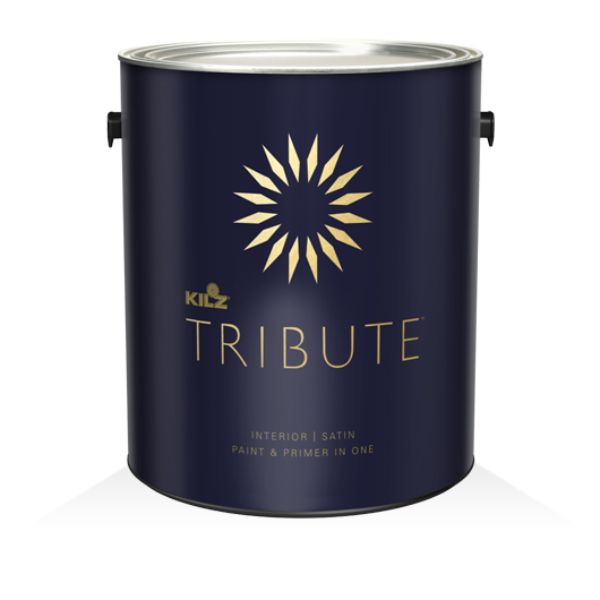
Utilize the KILZ TRIBUTE Satin’s power to create an unforgettable bond with low VOC.
100% acrylic makes up the paint and primer in the KILZ TRIBUTE formula. It provides superior concealment and coverage and has exceptional durability to withstand mildew and stain bleed-through.
Additionally adding to the finish’s beauty and hiding surface flaws is the pearl-like luminous satin paint.
For instance, light-medium stains, light-dark color shifts, and cracks. More specifically, the KILZ TRIBUTE is offered in four sheens, 100 timeless neutrals, and current hues.
On smooth surfaces, this primer covers about 400 square feet per gallon.
It can be applied to cured plaster, drywall, and well-prepared or uncoated wood masonry. The surface needs to be spotless and free of grease, dust, rust, mold, chalk, and peeling paint.
Excellent on any cabinets
- Vast coverage.
- Easy to apply.
- the enduring connection between the surface and the paint.
- It requires more preparation.
INSL-X SXA11009A-04 Stix Acrylic Waterborne Bonding
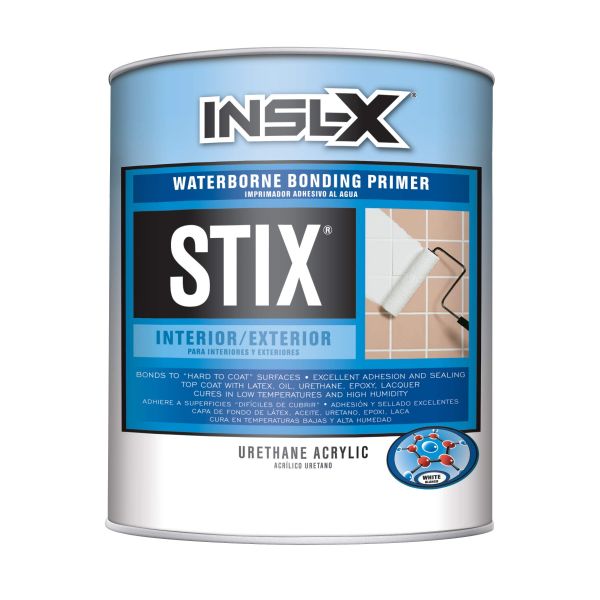
INSL-X Stix is an acrylic urethane hybrid primer that combines the exceptional durability of oil-based products with the eco-friendliness of a low-VOC, water-based formula that is simple to clean. As a result of its exceptional bonding abilities, it will adhere to virtually any surface, including formica and other plasticized kitchen cabinets.
The white INSL-X Stix primer can be finished with latex, oil-based products, lacquers, and epoxies. Although it needs three to four hours to fully dry, it can be used in high-humidity settings and at temperatures as low as 35 degrees Fahrenheit. The coverage, which is approximately 75 square feet per gallon, is however impacted by its enormous versatility.
Rust-Oleum 2004 Zinsser Bulls Eye 1-2-3 Primer
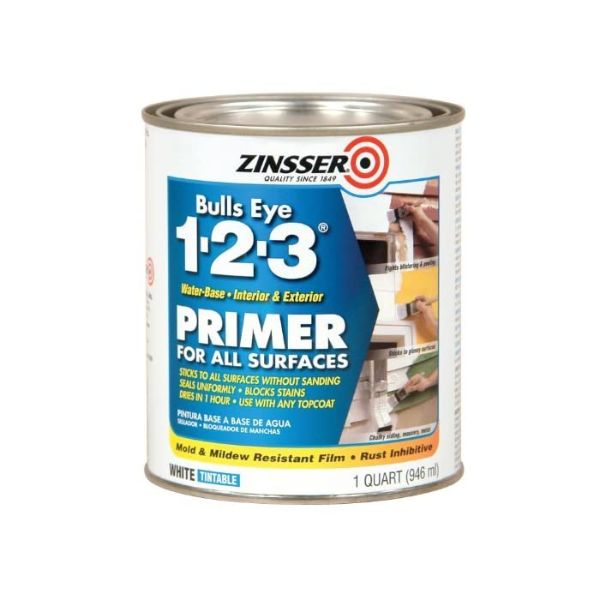
Can’t find the ideal primer for your do-it-yourself remodeling project? Take a look at Zinsser Bulls Eye by Rust-Oleum.
A high-end stain blocker that can withstand mildew development, tannin bleed-through, and peeling is the Zinsser Bulls Eye 1-2-3 Primer.
They are the unsung heroes who offer excellent adhesion to all surfaces without sanding. It is not just for kitchen cabinets; it is a whole-house primer-sealer.
They come in both gray and the classic white primer, which is interesting. Both colors have a rust inhibitor, making them perfect for use on fresh metal surfaces.
When combined with a dark topcoat paint, the gray primer is fantastic. The white, meanwhile, provides a common ground for everyone.
It is adaptable to use the Zinsser Bulls Eye 1-2-3. All in one, it performs the functions of a primer for wood, metal, concrete, plaster, tile, and glass.
Additionally, it is simple to clean with soap and water and is not only simple to use. About 100 square feet are covered by a quart.
High adhesion capacity
- It adheres to every surface.
- protecting metal cabinets from rust.
- Seals odor, stains, and bleeding from tanning.
- suppresses the growth of mold and mildew.
- It takes two layers to properly prime.
Zinsser 03504 Cover Stain Oil Primer Sealer
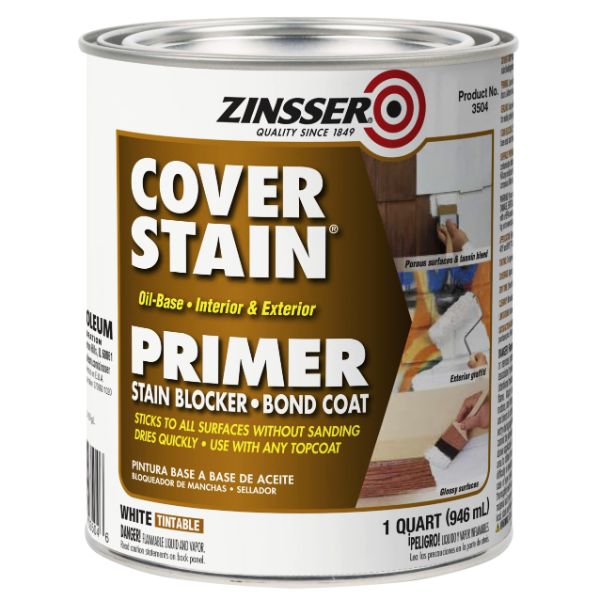
Due to its ability to add additional shine and ease of sanding, Zinsser 03504 Cover Stain lowers labor costs.
Additionally, this product not only conceals the dark color and has a high-hiding ability that blocks most stains, but it also stops water, smoke, and nicotine stains from penetrating the coat.
It is perfect for small projects like renovations, new construction, and priming.
Slowly drying for about an hour, the coat adheres firmly to any interior or exterior material. It also aids in the performance of the enamel undercoating.
Use Zinsser 03504 Cover Stain (oil-based) for difficult-to-paint surfaces because it really penetrates the surface.
Excellent for both indoor and outdoor
- Adds shine.
- It’s affordable.
- Easily understandable (great for beginners).
- Not mold-resistant.
Are Cabinets Requirements Primed?
Always prime stained kitchen cabinets before painting, preferably with two coats. Unless they have already been primed, even painted cabinets should be primed. Additionally, the paint should be in good condition with no visible tannin bleed.
When you use the proper primer, it should seal the cabinets’ surfaces and really adhere to the wood and paint to stop paint from peeling off when you clean. No matter how many coats you apply, tannin and the existing stain will bleed through the paint if you paint directly over stained cabinets without using primer, giving your project an awful finish. see more about Best Paint Brush For Cabinets
Consideration For The Best Primer For Kitchen Cabinets
Your decision regarding the best primer for kitchen cabinets will depend on a number of factors. Along with condition and existing finish, cabinet material is a significant factor. Continue reading to learn about some technical and useful aspects of priming kitchen cabinets as well as to discover solutions to most problems.
Types Of Primers
Kitchen cabinet primers come in four varieties: shellac-based, water-based, oil-based, and hybrid. Each has distinct advantages and disadvantages as well as various volatile organic compounds (VOCs; see below for more information).
- Water-based acrylic or latex primers are a Although the finish might not be as long-lasting as some other options, they are simple to work with, dry quickly, and only have a mild odor. Another benefit is that brushes and rollers are washable with soap and water.
- Oil-based (also called solvent-based) primers have long been the professional’s choice. However, they emit unpleasant fumes despite historically providing higher performance. When using these primers, it is advisable to wear respiratory protection, and painting spaces need to be properly ventilated. Drying times are much longer, and solvents are needed to clean the tools.
- Shellac-based (also called alcohol-based) primers were originally made from resin produced by the Dissolved in alcohol Asian lac beetle. They are almost always synthetic today. The original wood can be seen through the clear primer version of shellac, which is excellent for distressed paint finishes. Because shellac primers are frequently thin, they don’t always brush well but are simple to spray. Moderate odor; denatured alcohol and water are used for cleanup.
- Hybrid acrylic urethane primers are intended to offer the benefits of both oil- and water-based primers in a single product. They are made to be durable, easy to clean, and enjoyable to work with. They might not provide as much odor or stain blocking as some competitors, which is a drawback (explained below).
Odor And Stain Blocking
Primer is either white or gray, with the exception of primers based on shellac, which can be translucent. In general, white is used when a light top coat will be used, and gray helps give darker colors richness. When selecting a primer, it’s crucial to take into account any odors or stains that already exist on the kitchen cabinets.
It’s possible for smoke and strong odors to occasionally permeate even a clean kitchen, where they can then get trapped inside the cabinets. Food spills, grease, and cigarette smoke can all leave stains on kitchen cabinets. Tannin, a natural stain produced by oak, a popular material for kitchen cabinets, can bleed through finishes.
In order to address these issues, kitchen cabinet primers now frequently include odor- and stain-blocking capabilities. When a lighter finish is desired on dark cabinets, a stain-blocking primer is a good option because it will help prevent show-through and cut down on the number of coats needed.
Primers that block odors and stains have historically worked better when they were oil-based, but some shellac- and water-based versions can now perform the same function just as well. It’s crucial to carefully examine each product’s properties because not all primers provide all advantages.
Surface And Adhesion
Primers’ primary function is to act as an adhesion layer between the surface and the top coat. In other words, the primer needs to adhere strongly to the cabinet material and be open to the required finish being painted over it.
Here’s how primers stack up for a variety of common cabinet surfaces and situations:
- On unfinished wood and engineered composites like MDF, any primer will work well.
- Although a few coats of water-based primer can function just as well and likely dry just as quickly, oil-based primers typically fill wood grain the best.
- Formica and other laminates are designed to be nonstick, but existing gloss finishes can also cause adhesion issues. While these can be sanded, users can avoid the extra work by using primers either specifically described as made to stick to these surfaces or termed “high bonding” for their ability to adhere to multiple surfaces, including ultrasmooth porcelain, glass, and PVC.
Suggested reading: One of the best ways to quickly improve the appearance and ambiance of a space where you probably spend a lot of time is by updating your kitchen cabinets. So, how much does it cost to paint kitchen cabinets?
Environment And Health Impacts
Virtually all primers contain VOCs, which, depending on the concentration, can lead to a number of health and environmental issues. The U.S. maintains strict control over the recommended percentage. Environmental Protection Agency (EPA), though restrictions on oil-based primers are much stricter than those on water-based or shellac-based substitutes. It’s interesting to note that even primers that are advertised as having zero VOC can still have up to 5% of these compounds in them.
Regardless of the product used, priming kitchen cabinets should always be done in a space that has good ventilation. However, oil-based primers are more likely to release dangerous fumes that could make you feel lightheaded and irritate your airways, so you must wear respiratory protection. Always read the manufacturer’s warning and pay close attention to the instructions because even low-odor products, including those that are water-based, can have an unpleasant smell.
Cleanup for oil-based primers also calls for solvents. Due to the negative effects it would have on the environment, it is forbidden to dispose of these solvents down the drain. Waste must be disposed of properly; some locales provide curbside collection, or users can locate recycling facilities that accept hazardous waste.
Can I Paint Over Peeling And Chipped Paint After Priming It?
Can you simply paint over peeling and chipped paint if you decide to paint your kitchen cabinets but use the wrong primer or paint?
You could, but then you would face the same issue once more.
If your surface is not prepped and primed correctly, and you do not have a mechanical bond between your surface and your paint or primer it will chip and peel.
It doesn’t matter how much paint you apply on top of it.
Even better, try applying an oil-based primer all over the piece once more.
Even so, it wouldn’t function.
It will just keep peeling if your foundation is weak and your primer hasn’t already formed a bond with the surface.
The only option you have now is to completely remove the paint and start fresh using the right steps.
FAQs
You may still want more details on these products even after reading about shopping considerations and looking at some top picks. Find out the answers to some of the most frequently asked questions about using the best primers for kitchen cabinets by reading the following.
How Many Primer Coats Are Necessary For Kitchen Cabinets?
The majority of the time, one coat of primer will be adequate. To completely conceal the old color, very dark cabinets might need two.
Do Cabinets Need To Be Sanded Before Primer?
The choice of primer and the cabinet material will determine this. There are a few of the best primers for kitchen cabinets that don’t need to be sanded.
Should I Prime My Cabinets Before Painting Them?
Yes, primer can help conceal minor surface flaws, and some are especially effective at preventing stains and odors from bleeding through. If a lighter top coat is applied, it can also mask the previous shade. Most importantly, the right primer ensures that no matter what kind of material the cabinets are made of, the top coat will adhere properly.
How Much Time Do I Need To Give Cabinet Primer To Dry?
The recommended range is typically between one and four hours, but it’s always important to read the manufacturer’s instructions. High humidity can cause drying to take longer, so if you’re unsure of the drying time, give it a little more time.
Conclusion
If you want a primer that is almost guaranteed to work with any type of kitchen cabinet then your best choice would be an oil-based primer.
Keep in mind that if you don’t properly clean your cabinets first, any primer will fail!
Regarding your reading, I thank you.
